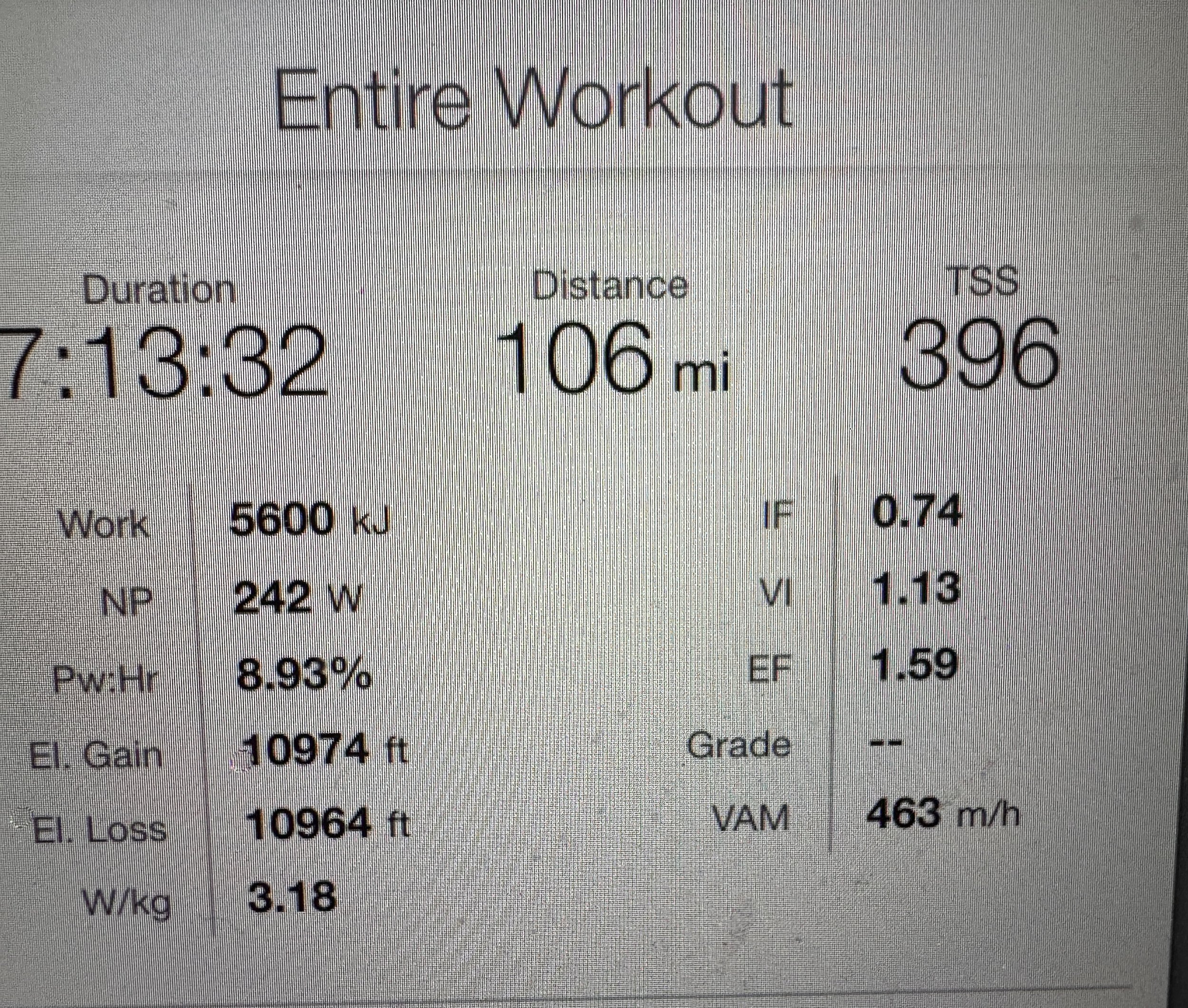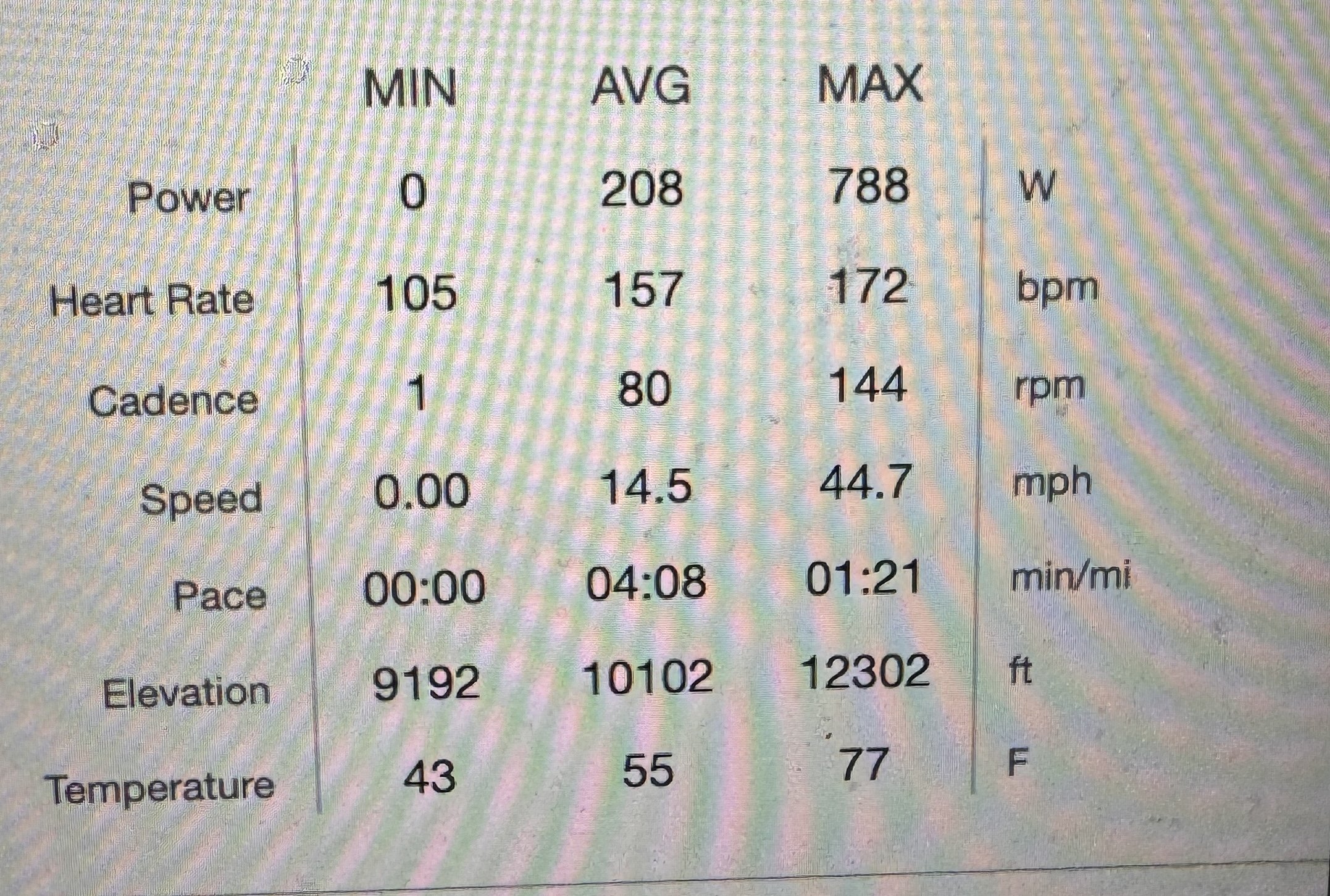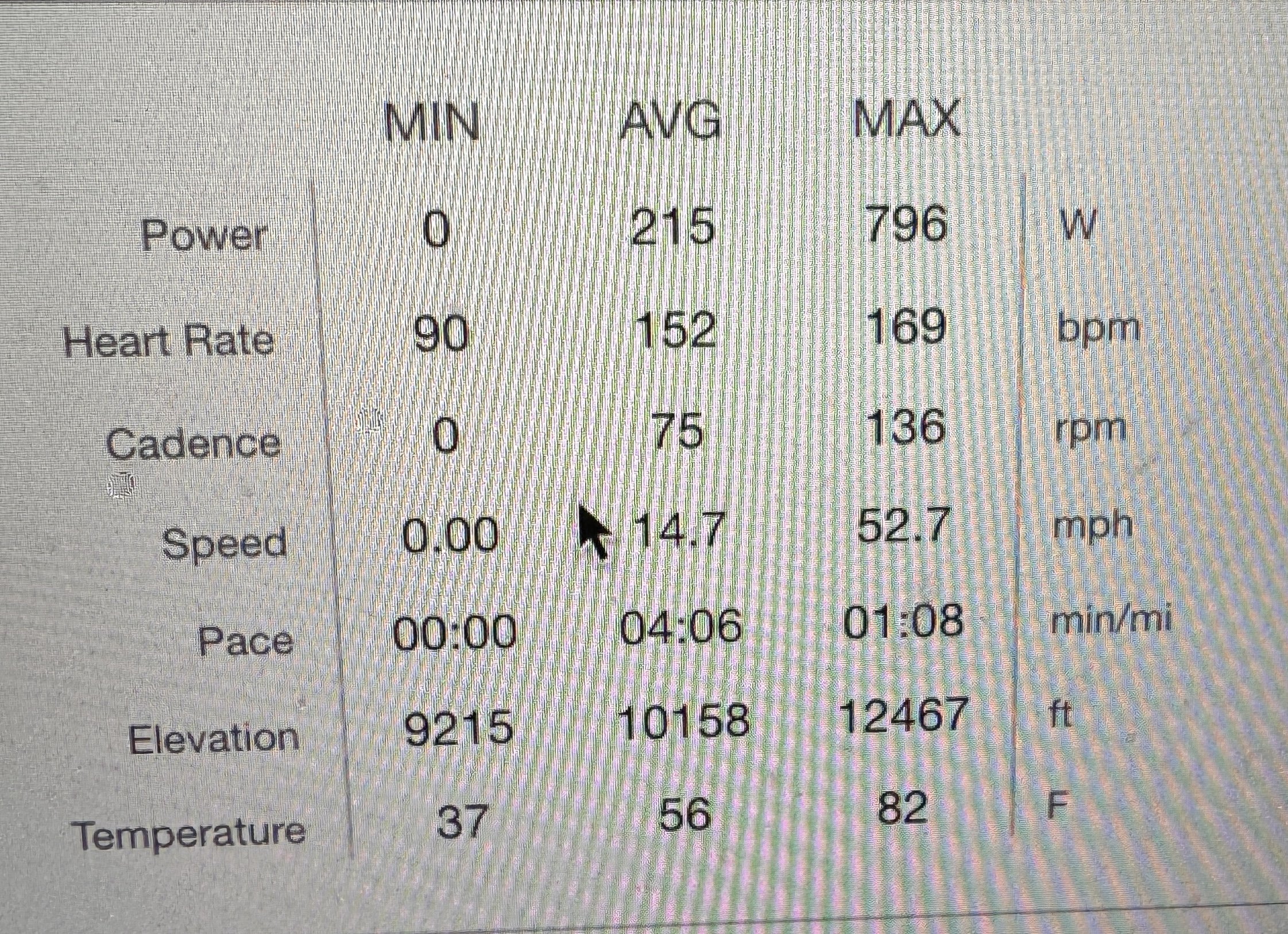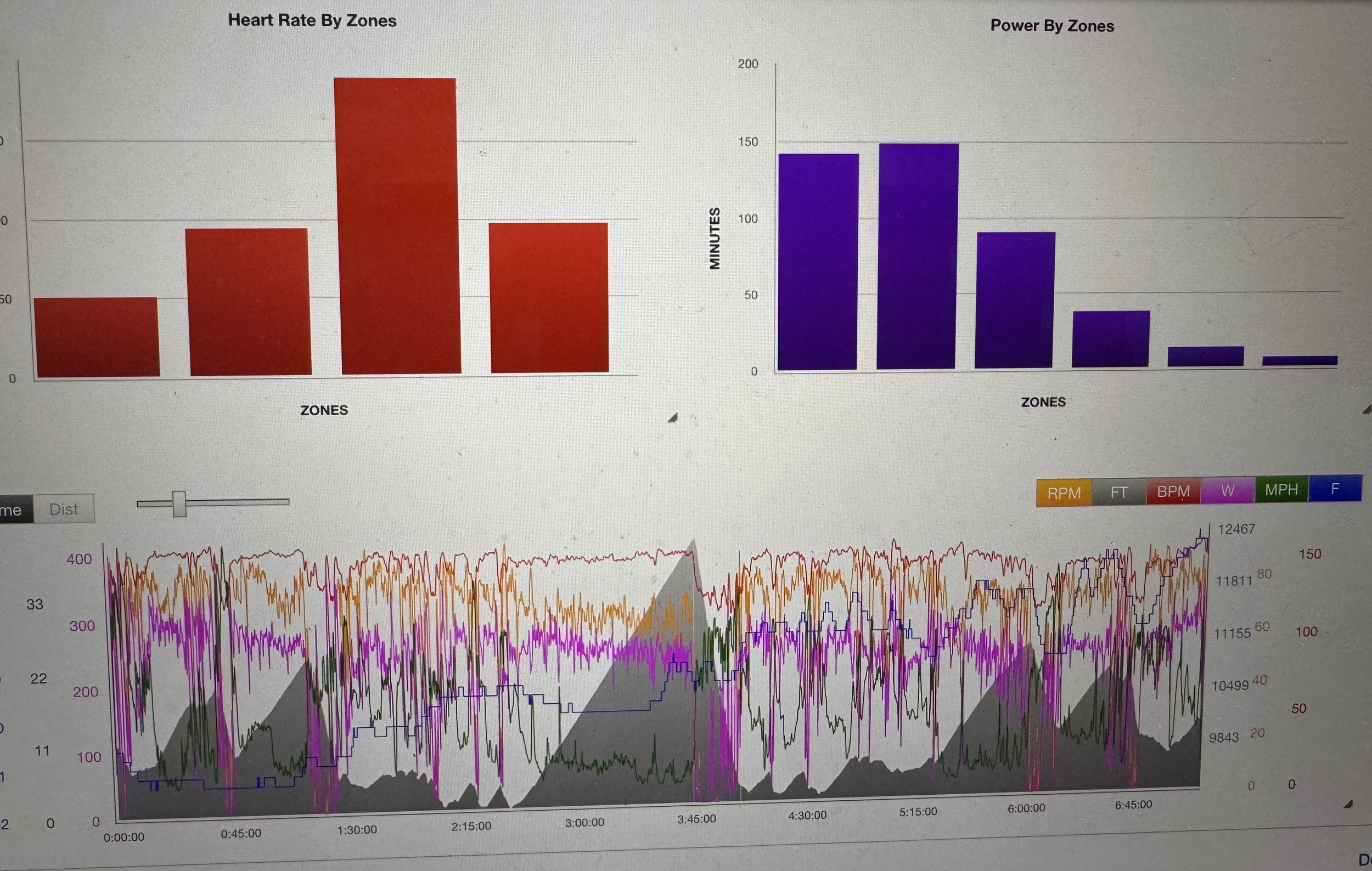Leadville 100 Analysis and Review- (2019 vs 2024)
It’s been 5 years since I last dipped my toes into the Leadville 100 game. I’m not exactly sure how and why it all happened but the next thing I knew I was registered for the Silver Rush 50 in hopes of qualifying for the 100. I knew I had good fitness going in and that it might be my last chance to try and get that elusive sub 7 hour time.
Leadville is a special race because for the most part the course is almost exactly the same every year, so it’s a great race to compare how fast you are. My primary goal for 2024 was to go sub 7 hours and secondary goal was to have a PR. I didn’t go sub 7 but I did get the PR with the longer distance of the course and missing a turn that added an extra mile and 5 minutes to my overall time. After reviewing the stats it’s really interesting how similar the two days were. But before I talk about similarities, I’ll talk about differences.
2019-
I was 40 years old and about to turn 41. We bought our house in Colorado Springs the week prior to Leadville. I had just got back from racing the Trans Rockies Classic 7 day stage race in BC in which we won the duo men’s category. It was a tough week of racing with over 30 hours, 36k vert, and almost 1700 TSS at sea level. I took almost the entire week off after to move and was feeling rested and fit for Leadville 2 weeks later.
2024-
I am 45 years old and about to turn 46. The biggest lifestyle difference was the arrival of my two children in those 5 years. Being a Dad is the greatest accomplishment of my life and gives me immense joy and satisfaction. But I’d be lying if I said it was always easy and doesn’t affect my recovery and time to train. That being said, I trained very specifically for the course, distance, and altitude. My last race was Silver Rush over a month earlier. So less racing than in 2019 but more intervals, structure, and time at altitude.
The Stats-
2019-
Elapsed finish time 7:12:57 (104 miles)
AP 208, NP 239, w/k 3.06
Avg HR- 157, Max HR 172, HR:PWR 10.81%
Avg speed- 14.5 mph
Avg cadence- 80
2024-
Elapsed finish time 7:13:32 (106 miles)
AP 215, NP 242, w/k 3.18
Avg HR 152, Max HR 169, HR:PWR 8.93%
Avg speed- 14.7 mph
Avg cadence- 75
So what does this all mean? Basically I was a bit more efficient with my HR:PWR aerobic decoupling factor. A lower ratio score means that my avg HR was less and my power was more which meant a lower-more efficient score. Mine went down from 10.81% (2019) to 8.93% (2024) which means I was producing more power at a lower heart rate. This enabled me to have a faster avg speed which is why I had a faster overall time (per the longer distance). In order to go sub 7 I would have had to avg closer to 14.8-15 mph and do around 245 watts NP. I increased by 3 watts (242 over 239) so I am very happy to see this score go up being 5 years older.
Additional Factors
Pacing and Cadence-
Racing at high altitude for longer distance requires a much different pacing strategy than a normal race. I avoided looking at power (since it will be much lower and all over the place) and use my HR and RPE to control my pace. About 90% of my FTP HR which is considered “sub-threshold” so about 160-165 HR on the climbs (my 20 min FTP HR is 170-175). I also used a slower cadence this year (75 avg) then in 2019 (80 avg) to try and keep my HR lower and use more muscular endurance type1 muscle fibers. These fibers are more resistant to fatigue (aerobic) and therefore more efficient than using type 2 muscle fibers (anaerobic).
Nutrition/Fueling Strategy-
I’ve been experimenting with my carb intake the month leading up to LV in my training and found I can handle roughly 80-100 grams of carbs/hour. I used Maurten gels and mix. One 65 gram gel/hour with one bottle of the 320 mix/hour. I never bonked and anytime I felt my power dropping I ate and instantly felt better. I know a lot of people struggled with stomach issues but I felt like I nailed it and would use the same protocol again. I also mixed in one bottle of water every 90 min and had 2 bottles of specific electrolytes to help top off the sodium levels, especially as the day got hotter. My last secret weapon was Carbo Rocket Rocket Lytes electrolyte pills. They have ginger and peppermint which not only help reduce cramps but also soothe the stomach. I popped about 6 or 7 of these as needed throughout the day.
Tactics-
An often overlooked and underrated part of success at LV100. You need to be at the right place at the right time and ride alone as little as possible. Having a fast wheel to sit on while doing little work is key in saving watts for the 2 major climbs. Group rides and road/gravel racing experience can be really beneficial.
Acclimatization and Course Familiarity-
You’ve 100% got to be adapted to high altitude (preferably up to 12.5k). The top racers usually spend at least a month training and sleeping up high. I had the luxury of spending 3 weekends at our condo at Copper Mountain (10k) and pre riding the course. My breathing never felt labored and I felt in control of my heart rate. Pre riding the Columbine and Powerline Climbs are key so you know how long and steep they are.
Bike Setup-
A hardtail or lightweight full suspension with fast rolling/light yet durable tires is optimal. I opted to keep my dropper on since it is so lightweight and allowed me to sit and rest on some of the descents. Very nice on Powerline too. Bar tape on inside of the handlebar is nice but I don’t think necessary. 34/52 was the gear for me. Anymore and I’d be pushing too hard on the climbs, any less and I’d be spun out on the flats.
Luck-
A 100 mile mountain bike race requires a little luck. You can’t afford to have any major mechanicals, punctures, missed feeds, bad weather, GPS issues, and who knows what else might happen. Meditation and mindfulness practice really help with visualizing the day ahead and staying calm and relaxed. My weekly sessions with Enso Mental Performance really helped with having awareness of thoughts and some excellent tools to shift the negative thoughts to positive ones.
At the end of the day, even if I didn’t miss the turn and do the extra mile I would have done a 7:08 so I still need to figure out how to shave at least 8 minutes off my time for that elusive sub 7. I guess that’s the allure of this race is trying to find the perfect balance between fitness, pacing, fueling, tactics, acclimatization, bike setup, and a little luck.
X
Thanks for reading!
See below for the training peaks files
Photo credit- Marathon Foto
2019
2024
2019
2024
2019
2024






